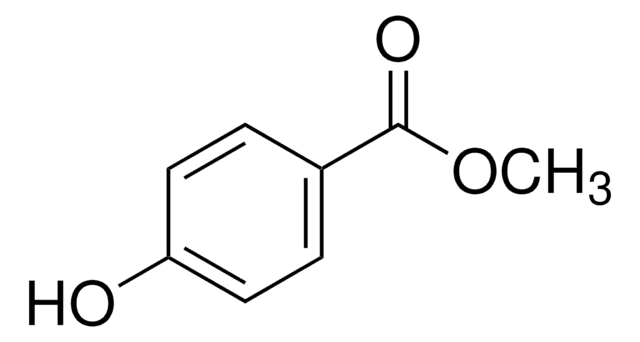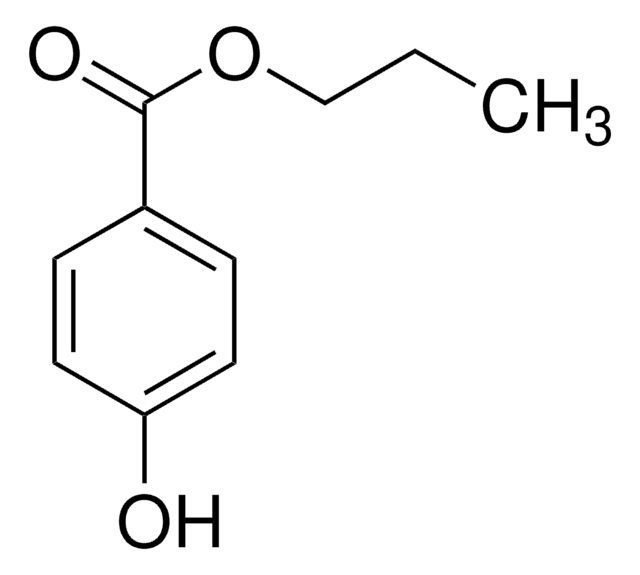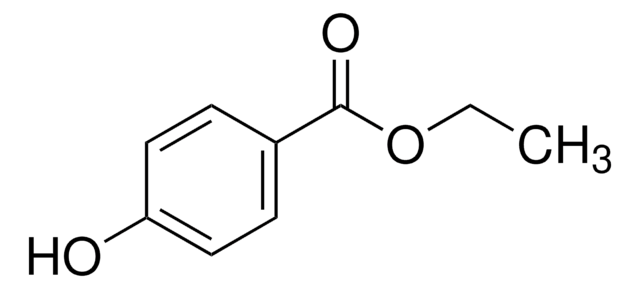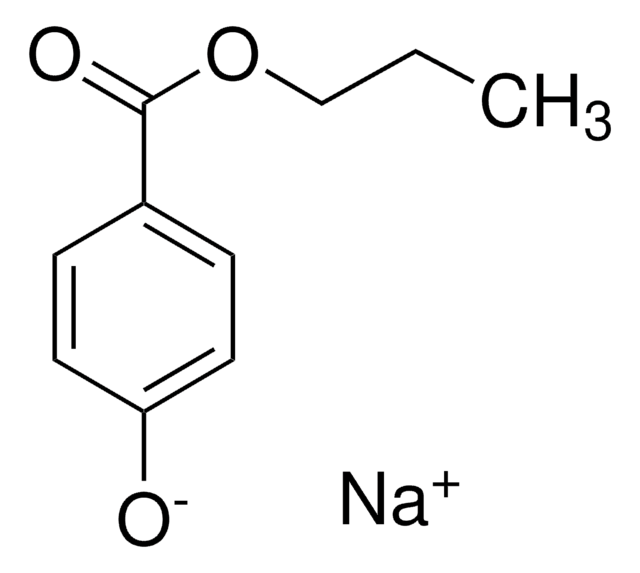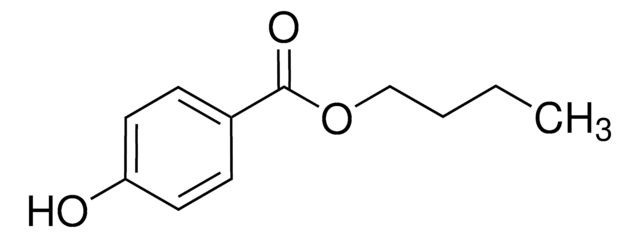M1650000
Methylparahydroxybenzoat
European Pharmacopoeia (EP) Reference Standard
Synonym(e):
Methyl-4-hydroxybenzoat, p-Hydroxybenzoesäuremethylester, Methylparaben, NIPAGIN
About This Item
Empfohlene Produkte
Qualität
pharmaceutical primary standard
API-Familie
parabens
Hersteller/Markenname
EDQM
mp (Schmelzpunkt)
125-128 °C (lit.)
Anwendung(en)
pharmaceutical (small molecule)
Format
neat
SMILES String
COC(=O)c1ccc(O)cc1
InChI
1S/C8H8O3/c1-11-8(10)6-2-4-7(9)5-3-6/h2-5,9H,1H3
InChIKey
LXCFILQKKLGQFO-UHFFFAOYSA-N
Suchen Sie nach ähnlichen Produkten? Aufrufen Leitfaden zum Produktvergleich
Allgemeine Beschreibung
Weitere Informationen und Unterstützung finden Sie auf der Webseite der entsprechenden Pharmakopöe.
Anwendung
Established for use according to European Pharmacopoeia for the preparation of the below-given solutions:
- Reference solutions (a) and (b) in the identification, testing for related substances, and assay of methyl parahydroxybenzoate and sodium methyl parahydroxybenzoate, according to the monographs 0409 and 1262
- Reference solution (c) for the testing of related substances in nifuroxazide using liquid chromatography (2.2.29), according to the monograph 1999
- Reference solution (b) in the identification of sodium ethyl parahydroxybenzoate using thin-layer chromatography (General text 2.2.27), according to the monograph 2134
Verpackung
Sonstige Hinweise
Ähnliches Produkt
H-Sätze
P-Sätze
Gefahreneinstufungen
Aquatic Chronic 2
WGK
WGK 1
Flammpunkt (°F)
334.4 °F
Flammpunkt (°C)
168 °C
Choose from one of the most recent versions:
Analysenzertifikate (COA)
Sorry, we don't have COAs for this product available online at this time.
If you need assistance, please contact Kundensupport
Besitzen Sie dieses Produkt bereits?
In der Dokumentenbibliothek finden Sie die Dokumentation zu den Produkten, die Sie kürzlich erworben haben.
Kunden haben sich ebenfalls angesehen
Unser Team von Wissenschaftlern verfügt über Erfahrung in allen Forschungsbereichen einschließlich Life Science, Materialwissenschaften, chemischer Synthese, Chromatographie, Analytik und vielen mehr..
Setzen Sie sich mit dem technischen Dienst in Verbindung.